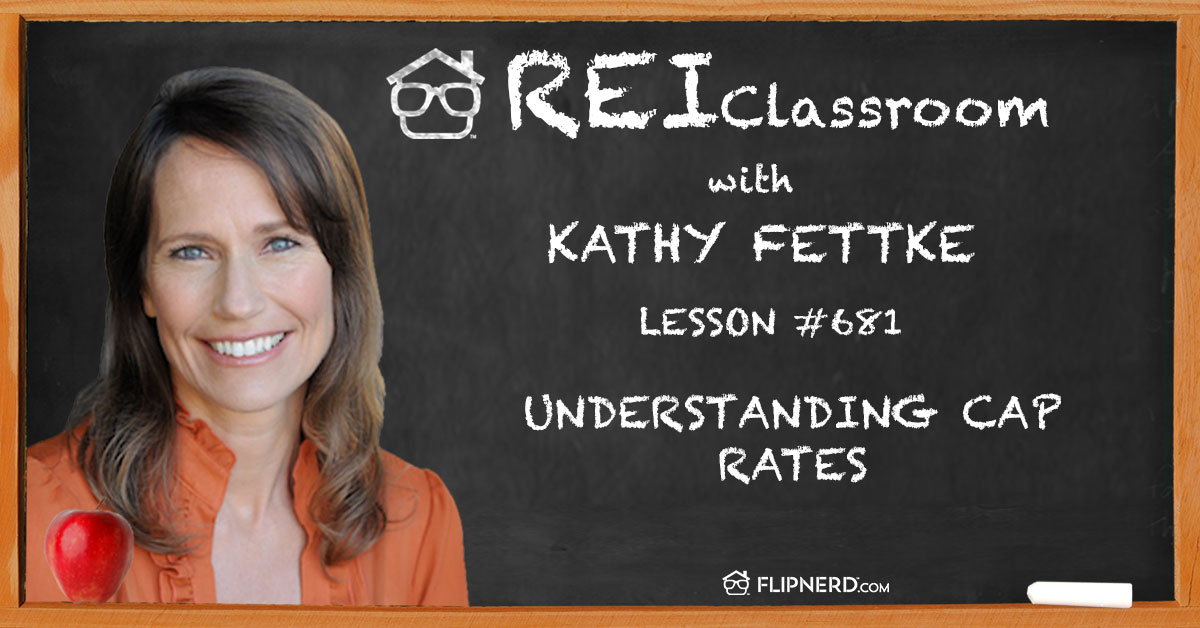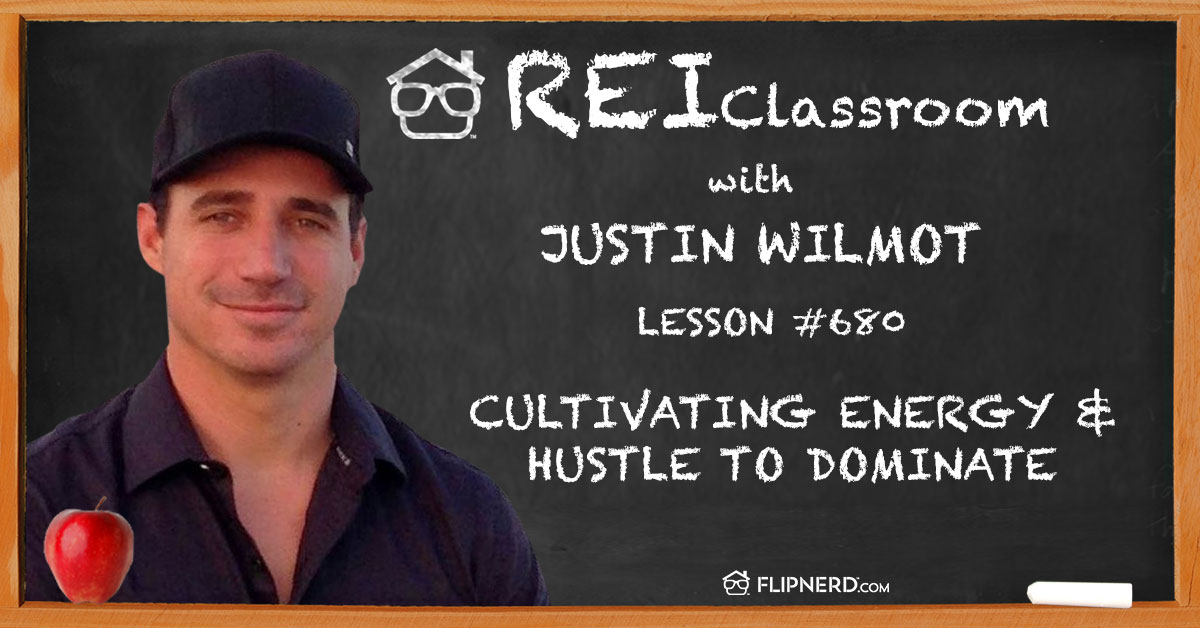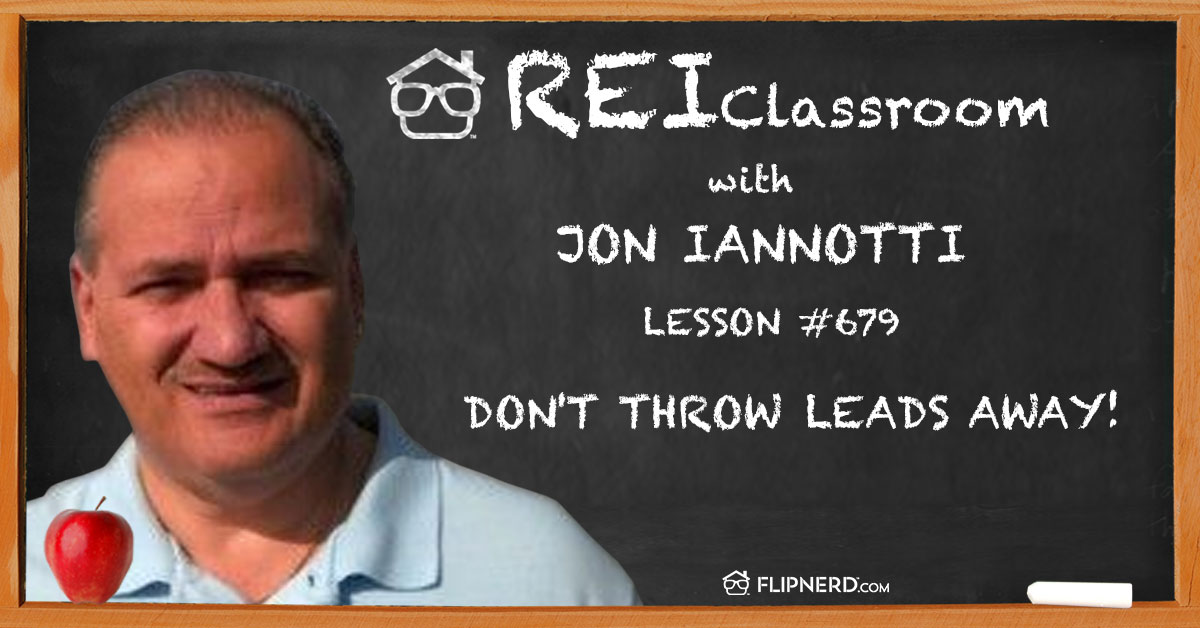Today’s REI Classroom Lesson
BreAnn Stephenson shares some of the most important ways to prevent avoidable losses in your business. Fires, theft, and frozen pipes are just a few of the potential problems that can be at times, avoided by taking the proper steps.
REI Classroom Summary
Prepare yourself and your business for potential losses to not only save you time and money, but also can prevent injuries.
Listen to this REI Classroom Lesson
Real Estate Investing Classroom Show Transcripts:
Mike: Welcome back to the FlipNerd.com REI Classroom, where experts from across the real estate investing industry teach you quick lessons to take your business to the next level. And now, let’s meet today’s expert host.
BreAnn: Hi there, guys. My name is BreAnn Stephenson. I’m with Affinity Loss Prevention Services and I am your host today of the REI Classroom show. Today, we are going to be talking about the importance of loss prevention and why it’s such a crucial component of your real estate investing strategy.
Mike: This show was sponsored by passiverental.com.
BreAnn: So if you’ll bear with me here, I will refer to my notes. There’s a lot in terms of loss prevention. There’s so much information. So feel free to write things down and review them and review them again because that’s really the name of the game in terms of loss prevention, making a plan and then executing that plan. The easiest thing for us to do to remember those things is to write them down.
Let’s talk a little bit about, first of all, what the definition of loss prevention is or just clarify what really that means in your own world. A lot of people think of loss prevention as it relates to insurance claims. And while that may be true, loss prevention also has to do with preventing losses that may not either be covered by insurance because, as we know, insurance can’t cover everything, or it may be something that would be under the deductibles. So when we’re talking about loss prevention today, let’s think of it in terms of preventing avoidable losses.
So then, when we talk about avoidable losses, what types of losses are those? When we talk about avoidable losses, that’s really, most often, not going to be things related to mother nature. So you can’t really prevent a tornado from happening. You can’t prevent an earthquake from happening or a hurricane from coming your way, although there may be things you can do to strengthen your property.
There may be things that also are even required by code in your area, depending upon if you have properties in an area that are at risk for hurricanes, for example. You maybe have codes and ordinances that you have to abide by when you’re building. That may help. However, that’s not something that you can actually affect from happening in the first place.
So when we talk about avoidable losses, what we’re talking about, the most common types that we really see for you guys as real estate investors are just a few, handful of things. Number one would be fire. Something that you may think, “I may not be able to prevent that,” but, most often, preventable things would be losses from cooking, so tenants who maybe walk away from that pot on the stove, and then also, too, even preventing people from getting into the property if you have a vacant location that, let’s say, is sitting on the market for sale, for example. Really, your best preventative measure there is securing the property well. And then, also, just having a good plan for monitoring the location.
Theft and vandalism are another thing. A lot of people think, “I’m not really sure that I can prevent that at an investment property,” which, in fact, it really isn’t the case. Most often, when we see claims that come in in terms of theft and vandalism, it’s really because the property has been left unattended for a long time. We maybe see that somebody hasn’t been there in six months or even three months, for example.
So a lot of preventing theft and vandalism is being there. Enlisting your neighbors, for example. And then, also, just securing the property appropriately, boarding the property if it’s going to be vacant for a considerable amount of time.
As a side note, there may be some stipulations in your insurance policy that may require you to board the property and secure it properly in order to have coverage. So be mindful there.
And then, also, another thing that really is preventable at your property would be water damage. Mostly, when we talk about water damage that’s preventable, the thing that we see time and time again is claims for burst pipes in the winter. So when you’re talking about vacant properties, making sure that your property is heated to at least 55 degrees, at minimum.
It may need to be higher than that, depending on the location of your plumbing. So bear that in mind if you have more pipes that are near exterior walls or if you live or invest in an environment that is further north. So just bear that in mind, 55 is maybe a minimum, but that may not be high enough for you.
Then, also, let’s talk about tree damage. You really want to stay on top of inspecting your trees. First, when you purchase a property, for once thing, to see what state they’re in. You may even need to call an arborist out to determine how healthy your trees are. And also, periodic inspections, especially when you are right before those seasons that can really bring some damage from storms, for example, before you head into the winter. In spring and summer months, properties can be very vulnerable.
Tree damage can be anything from $500 to $70,000 or more. It just depends on how large the tree is and where it falls. So just be mindful of that. That’s something that even removing a tree that is dead can cost you less than a deductible. Even though it may seem costly to remove something, the cost of removing that after the fact or the damage that it does to your property can be exponentially greater. So be mindful there.
And then two last common types of loss are tenant damage. Avoiding tenant damage, not necessarily the accidental kind, but damage that may be done during an eviction, that can really start, of course, at square one with your tenant screenings. So make sure that you have a thorough process for screening tenants or that your property manager has a good system in place as well. You want to make sure that you’re doing your due diligence at the front of that relationship so that you’re really placing a quality tenant and that you’re also making sure you maintain that relationship.
Don’t forget about your good renters that you have and encourage them to stay longer by really respecting that relationship and letting them know you’re appreciative of how they keep your property.
And then, lastly, talk about liability issues. So one of the common risks that your property may come up against could be either slips and falls, maybe. And those can be prevented by your regular maintenance or you may run into issues with contractors getting injured. Just make sure you know what your coverages are for your property. Most often, injuries to contractors are not something that is covered underneath your property policy. The coverage is going to be included somewhere else, like in the general liability policy. So just be mindful of the coverage there and hire people who are licensed and insured.
So that’s a lot said there, but just one side note about insurance before we wrap up here today. As I mentioned, insurance can’t cover everything so just make sure that you know your coverage, that you review that coverage with your agent on a regular basis and that you’re covered in the areas that you need to be.
And then, also, that you are mindful of areas where you might have some gaps in that coverage because, most often, those areas, you really can do something to prevent losses in that area. So just know your coverage well and also make a plan for loss prevention. In the end, our hope is if you have a good plan, you’ll save money and save yourself time, headache and, who knows, you might even save a life too. I hope you’ve enjoyed today and thank you so much, guys. Have a great day.
Mike: Passiverental.com is your source for turnkey, done-for-you rental properties. If you’d like to be an investor and not a landlord, please visit passiverental.com to learn how to purchase cash flowing, professionally managed rental properties in the hottest rental markets across the country. We can also help connect you with financing for your next property. Invest the easy way today and get started by visiting passiverental.com.
Please note, the views and the opinions expressed by the individuals in this program do not necessarily reflect those of FlipNerd.com or any of its partners, advertisers or affiliates. Please consult professionals before making any investment or tax decisions, as real estate investing can be risky.
Are you a member yet of FlipNerd.com, the hottest real estate investing social community online? If not, you can join for free in less than 30 seconds and get access to hundreds of off-market deals, vendors in your market to help you in your business, and you can start networking with thousands of other investors just like you. Get your free account now at FlipNerd.com.
Please check out the FlipNerd family of real estate investing shows, where you can access hundreds of expert interviews, quick tips and lessons from leaders across the real estate investing industry. They’re available at FlipNerd.com/shows or simply search for FlipNerd in the iTunes store.
BreAnn: Hi there, guys. My name is BreAnn Stephenson. I’m with Affinity Loss Prevention Services and I am your host today of the REI Classroom show. Today, we are going to be talking about the importance of loss prevention and why it’s such a crucial component of your real estate investing strategy.
Mike: This show was sponsored by passiverental.com.
BreAnn: So if you’ll bear with me here, I will refer to my notes. There’s a lot in terms of loss prevention. There’s so much information. So feel free to write things down and review them and review them again because that’s really the name of the game in terms of loss prevention, making a plan and then executing that plan. The easiest thing for us to do to remember those things is to write them down.
Let’s talk a little bit about, first of all, what the definition of loss prevention is or just clarify what really that means in your own world. A lot of people think of loss prevention as it relates to insurance claims. And while that may be true, loss prevention also has to do with preventing losses that may not either be covered by insurance because, as we know, insurance can’t cover everything, or it may be something that would be under the deductibles. So when we’re talking about loss prevention today, let’s think of it in terms of preventing avoidable losses.
So then, when we talk about avoidable losses, what types of losses are those? When we talk about avoidable losses, that’s really, most often, not going to be things related to mother nature. So you can’t really prevent a tornado from happening. You can’t prevent an earthquake from happening or a hurricane from coming your way, although there may be things you can do to strengthen your property.
There may be things that also are even required by code in your area, depending upon if you have properties in an area that are at risk for hurricanes, for example. You maybe have codes and ordinances that you have to abide by when you’re building. That may help. However, that’s not something that you can actually affect from happening in the first place.
So when we talk about avoidable losses, what we’re talking about, the most common types that we really see for you guys as real estate investors are just a few, handful of things. Number one would be fire. Something that you may think, “I may not be able to prevent that,” but, most often, preventable things would be losses from cooking, so tenants who maybe walk away from that pot on the stove, and then also, too, even preventing people from getting into the property if you have a vacant location that, let’s say, is sitting on the market for sale, for example. Really, your best preventative measure there is securing the property well. And then, also, just having a good plan for monitoring the location.
Theft and vandalism are another thing. A lot of people think, “I’m not really sure that I can prevent that at an investment property,” which, in fact, it really isn’t the case. Most often, when we see claims that come in in terms of theft and vandalism, it’s really because the property has been left unattended for a long time. We maybe see that somebody hasn’t been there in six months or even three months, for example.
So a lot of preventing theft and vandalism is being there. Enlisting your neighbors, for example. And then, also, just securing the property appropriately, boarding the property if it’s going to be vacant for a considerable amount of time.
As a side note, there may be some stipulations in your insurance policy that may require you to board the property and secure it properly in order to have coverage. So be mindful there.
And then, also, another thing that really is preventable at your property would be water damage. Mostly, when we talk about water damage that’s preventable, the thing that we see time and time again is claims for burst pipes in the winter. So when you’re talking about vacant properties, making sure that your property is heated to at least 55 degrees, at minimum.
It may need to be higher than that, depending on the location of your plumbing. So bear that in mind if you have more pipes that are near exterior walls or if you live or invest in an environment that is further north. So just bear that in mind, 55 is maybe a minimum, but that may not be high enough for you.
Then, also, let’s talk about tree damage. You really want to stay on top of inspecting your trees. First, when you purchase a property, for once thing, to see what state they’re in. You may even need to call an arborist out to determine how healthy your trees are. And also, periodic inspections, especially when you are right before those seasons that can really bring some damage from storms, for example, before you head into the winter. In spring and summer months, properties can be very vulnerable.
Tree damage can be anything from $500 to $70,000 or more. It just depends on how large the tree is and where it falls. So just be mindful of that. That’s something that even removing a tree that is dead can cost you less than a deductible. Even though it may seem costly to remove something, the cost of removing that after the fact or the damage that it does to your property can be exponentially greater. So be mindful there.
And then two last common types of loss are tenant damage. Avoiding tenant damage, not necessarily the accidental kind, but damage that may be done during an eviction, that can really start, of course, at square one with your tenant screenings. So make sure that you have a thorough process for screening tenants or that your property manager has a good system in place as well. You want to make sure that you’re doing your due diligence at the front of that relationship so that you’re really placing a quality tenant and that you’re also making sure you maintain that relationship.
Don’t forget about your good renters that you have and encourage them to stay longer by really respecting that relationship and letting them know you’re appreciative of how they keep your property.
And then, lastly, talk about liability issues. So one of the common risks that your property may come up against could be either slips and falls, maybe. And those can be prevented by your regular maintenance or you may run into issues with contractors getting injured. Just make sure you know what your coverages are for your property. Most often, injuries to contractors are not something that is covered underneath your property policy. The coverage is going to be included somewhere else, like in the general liability policy. So just be mindful of the coverage there and hire people who are licensed and insured.
So that’s a lot said there, but just one side note about insurance before we wrap up here today. As I mentioned, insurance can’t cover everything so just make sure that you know your coverage, that you review that coverage with your agent on a regular basis and that you’re covered in the areas that you need to be.
And then, also, that you are mindful of areas where you might have some gaps in that coverage because, most often, those areas, you really can do something to prevent losses in that area. So just know your coverage well and also make a plan for loss prevention. In the end, our hope is if you have a good plan, you’ll save money and save yourself time, headache and, who knows, you might even save a life too. I hope you’ve enjoyed today and thank you so much, guys. Have a great day.
Mike: Passiverental.com is your source for turnkey, done-for-you rental properties. If you’d like to be an investor and not a landlord, please visit passiverental.com to learn how to purchase cash flowing, professionally managed rental properties in the hottest rental markets across the country. We can also help connect you with financing for your next property. Invest the easy way today and get started by visiting passiverental.com.
Please note, the views and the opinions expressed by the individuals in this program do not necessarily reflect those of FlipNerd.com or any of its partners, advertisers or affiliates. Please consult professionals before making any investment or tax decisions, as real estate investing can be risky.
Are you a member yet of FlipNerd.com, the hottest real estate investing social community online? If not, you can join for free in less than 30 seconds and get access to hundreds of off-market deals, vendors in your market to help you in your business, and you can start networking with thousands of other investors just like you. Get your free account now at FlipNerd.com.
Please check out the FlipNerd family of real estate investing shows, where you can access hundreds of expert interviews, quick tips and lessons from leaders across the real estate investing industry. They’re available at FlipNerd.com/shows or simply search for FlipNerd in the iTunes store.










